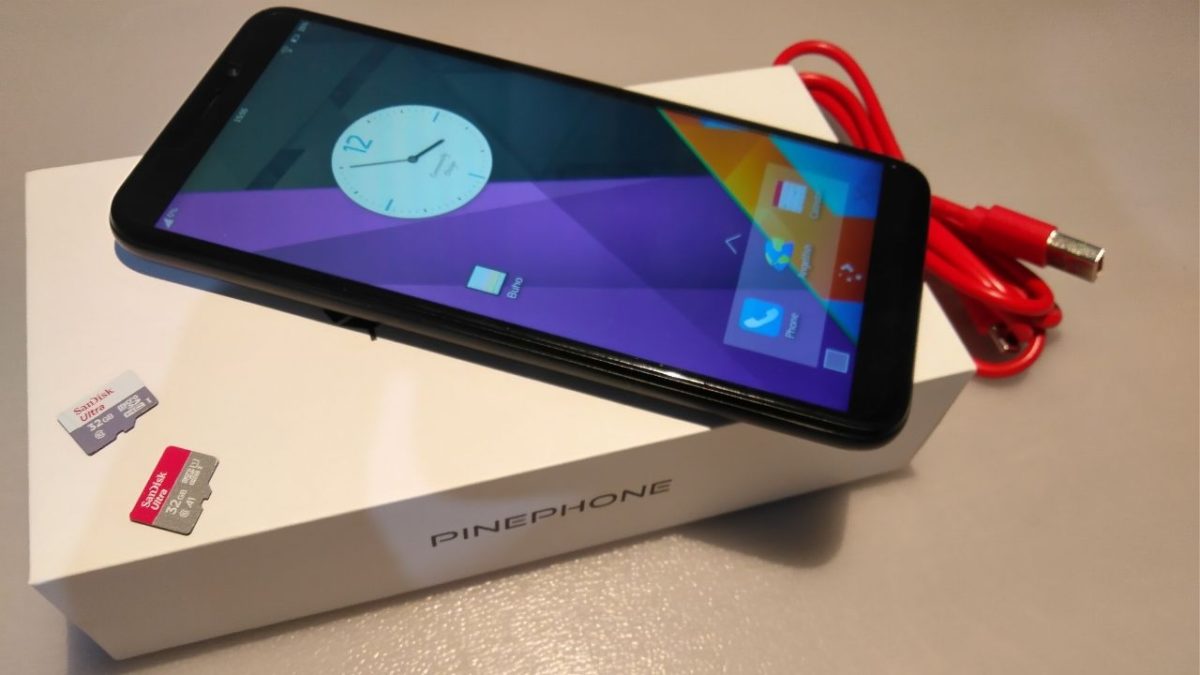Pinephone was created by Pine64, a small, community driven company focused on creating high-quality, low cost ARM devices. PINE64 made its debut with the Pine A64 single-board computer (similar to the Raspberry Pi). Over time, and the growing community that centers around the company, Pine64 began to introduce other devices. Laptops (Pinebook and Pinebook Pro), then smartphones (Pinephone) and smartwatch (Pinetime). However, in my opinion, the biggest step in the development is Pinephone, a real novelty – open, hackable and powered by the Linux kernel smartphone.
The PinePhone is a Quad-Core ARM Cortex A53 64-bit SOC include 2GB RAM, 5.95″ LCD 1440×720 hardened glass screen with an aspect ratio of 18:9. Also USB Type C for power, data, and video out, Bluetooth 4.0, a headphone jack, and a matte black-finished plastic casing, among others.
The PinePhone features six switches that can be used to configure its hardware. They are numbered 1-6, with switch 1 located nearest to the modem.

- Modem: On enables 2G/3G/4G communication and GNSS hardware, off disables.
- WiFi/BT: On enables Wi-Fi and Bluetooth communication hardware, off disables.
- Microphone: On enables audio input from on-board microphones (not 3.5mm jack), off disables.
- Rear camera: On enables the rear camera, off disables.
- Front camera: On enables the front camera, off disables.
- Headphone: On enables audio input and output via the 3.5mm audio jack, off switches the jack to hardware UART mode.
The full Pinephone specification can be found on the Pine64 wiki page: https://wiki.pine64.org/index.php/PinePhone
Why is Pinephone a bold project?
Pine64 didn’t design the PinePhone to run Android or iOS. That should be a sufficient answer. The smartphone is mainly intended for people who are fascinated by Linux or for users who value mobile security.
Pinephone is a project where the community plays the main role, not one company. The community gets their equipment and from now on everyone adds their own brick to the final shape of the product. This is an absolute novelty in the approach to selling a smartphone. This is a perfect example from Eric Raymond’s book “The Cathedral and the Bazaar”, where the Pine64 smartphone is the equivalent of a Bazaar (in a world where every product is created in a Cathedral model).
The Cathedral is built in a sense in secret. People know that something is being built, but they are not allowed on the construction site. They will not experience the Cathedral until it is finished. Apple is a great example here.
None of us is as smart as all of us
~ Ken H. Blanchard
A bazaar is often built by many people at once. These changes can be evaluated and tested by users immediately. In this way, many Open Source systems are created. This methodology is very well known and often used, but still by anyone when creating a smartphone.
…and this is the core of Pine64 philosophy: Pine64 does hardware while the community does the software. This is a significant simplification of the company’s operations, but it more or less reflects the operating principle.
Pinephone: doomed to success?
It is naturally difficult to clearly determine whether Pinephone will succeed. I can see however, how fast the software has been developing since the release of the device and I am convinced that Pinehone is doomed to success.
Noteworthy is also a fantastic dialogue with developers of various Linux distributions and all enthusiasts of free and open software. Thanks to this, people involved in the development of software centered around pine64 devices grow every day. You can download images for Pinephone: Ubuntu Touch, postmarketOS, Manjaro, KDE Neon, SailfishOS, Maemo Leste, LuneOS, Debian + Phosh.
A good starting place to download the appropriate image is the Pine64 wiki page: https://wiki.pine64.org/index.php/PinePhone_Software_Release

Leave a Reply